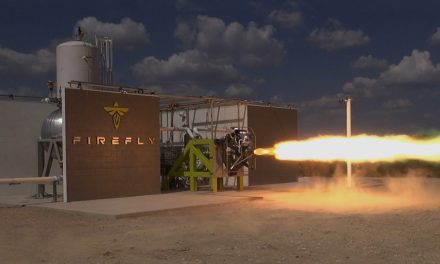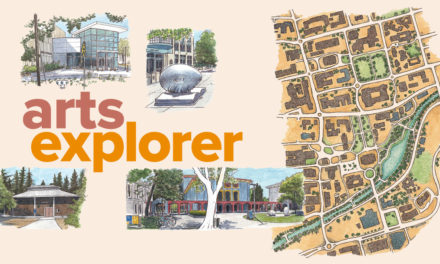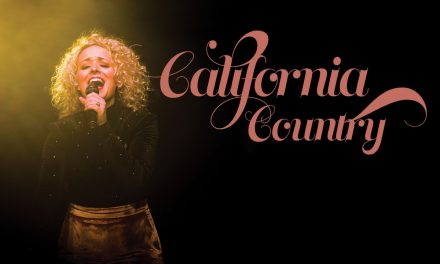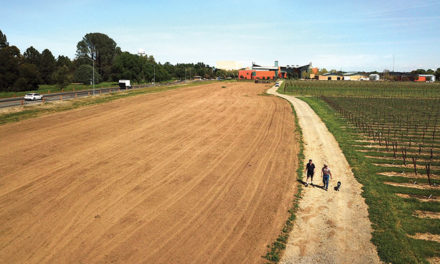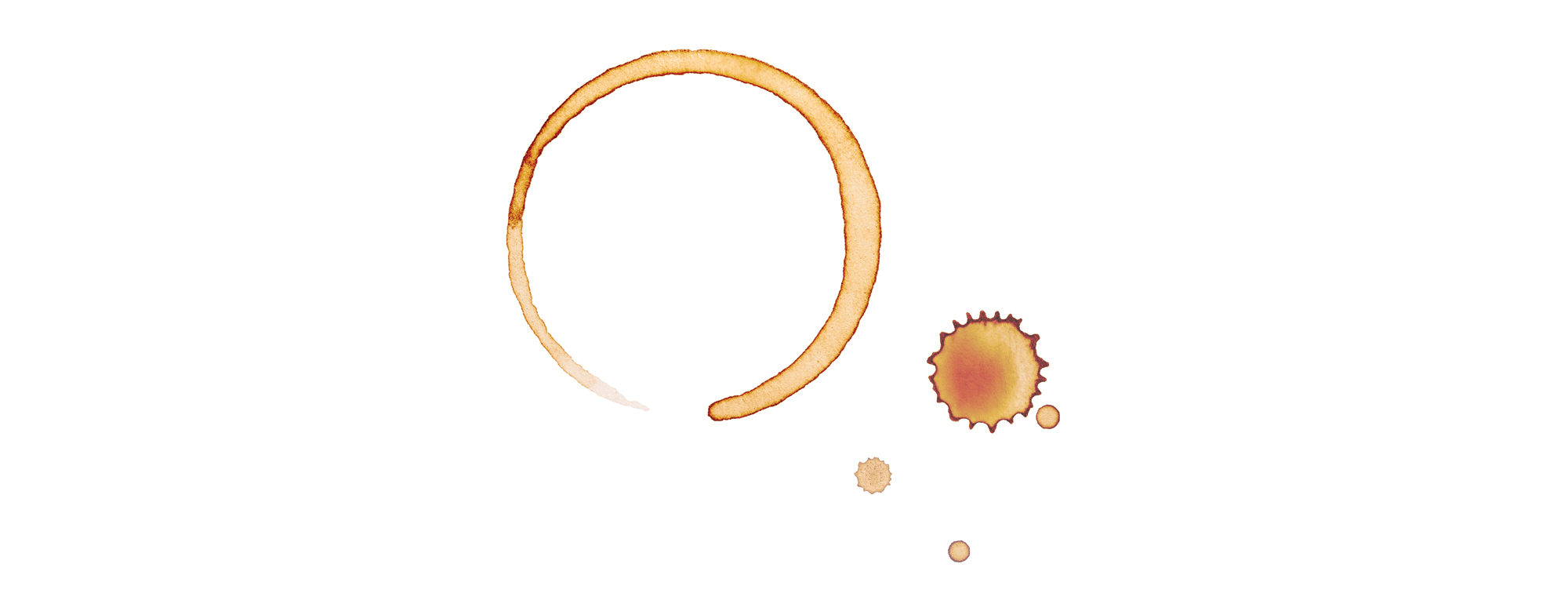
Beyond the Bean
The UC Davis Coffee Center aims to elevate coffee research and teaching to a whole new level.
Photos by Gregory Urquiaga
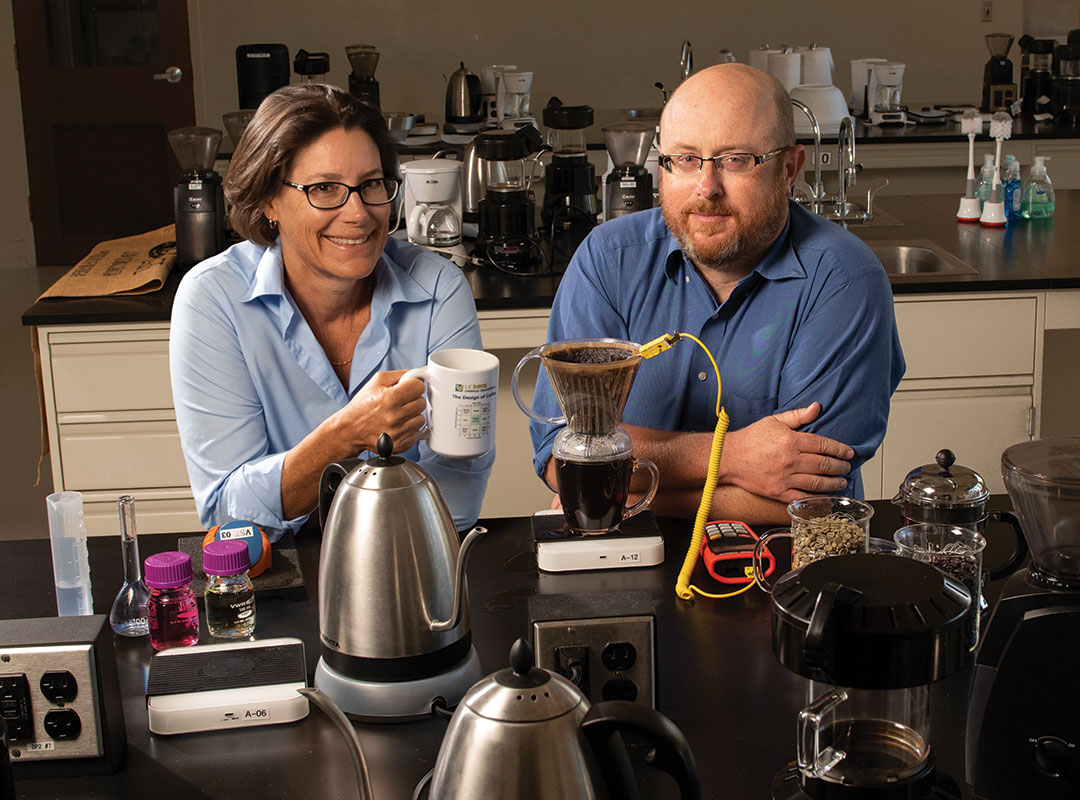
Chemical engineering professors Tonya Kuhl and William Ristenpart are co-directors of the UC Davis Coffee Center.
The rich, earthy aroma of coffee wafts through the air. Pairs of students critique their brews as they sit among rows of French presses and carafes.
It is not a cafe or the CoHo. It is a UC Davis classroom.
And it is part of UC Davis’ nearly 10-year effort to transform the way people think about and understand a beverage that is enjoyed by roughly 2.5 billion people around the world every day.
This fall, UC Davis will begin construction of the UC Davis Coffee Center, creating the world’s first academic research center focused on coffee. The building will house office and teaching space, labs, a roastery and more.
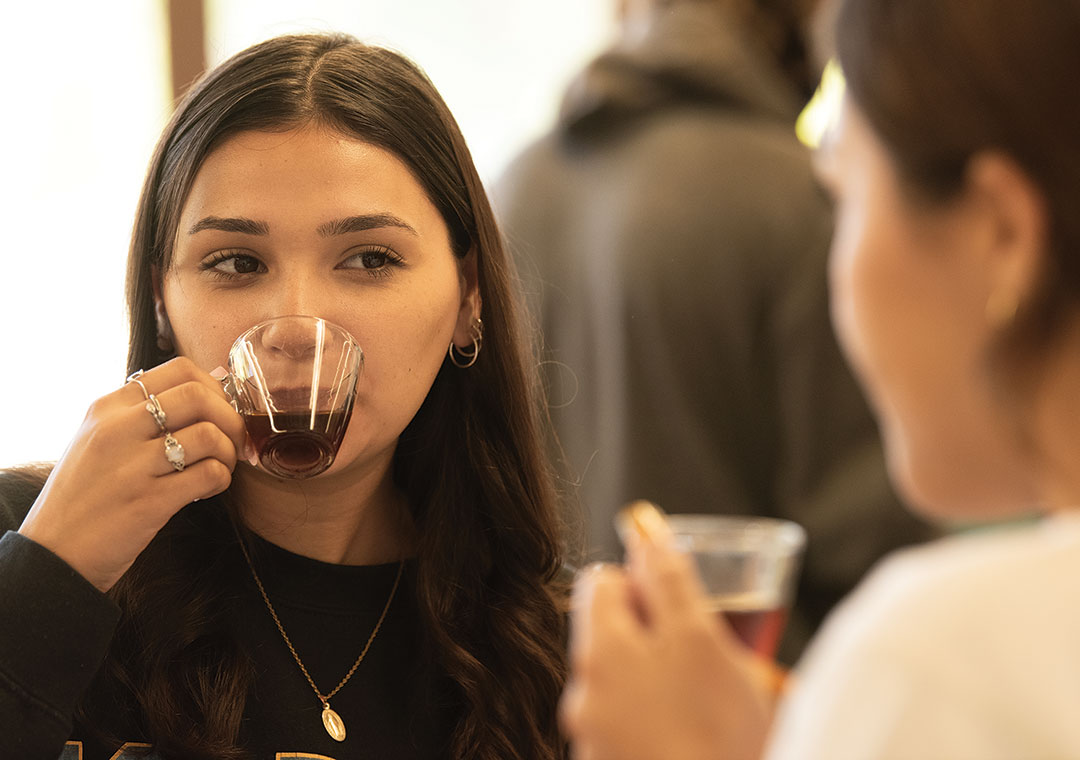
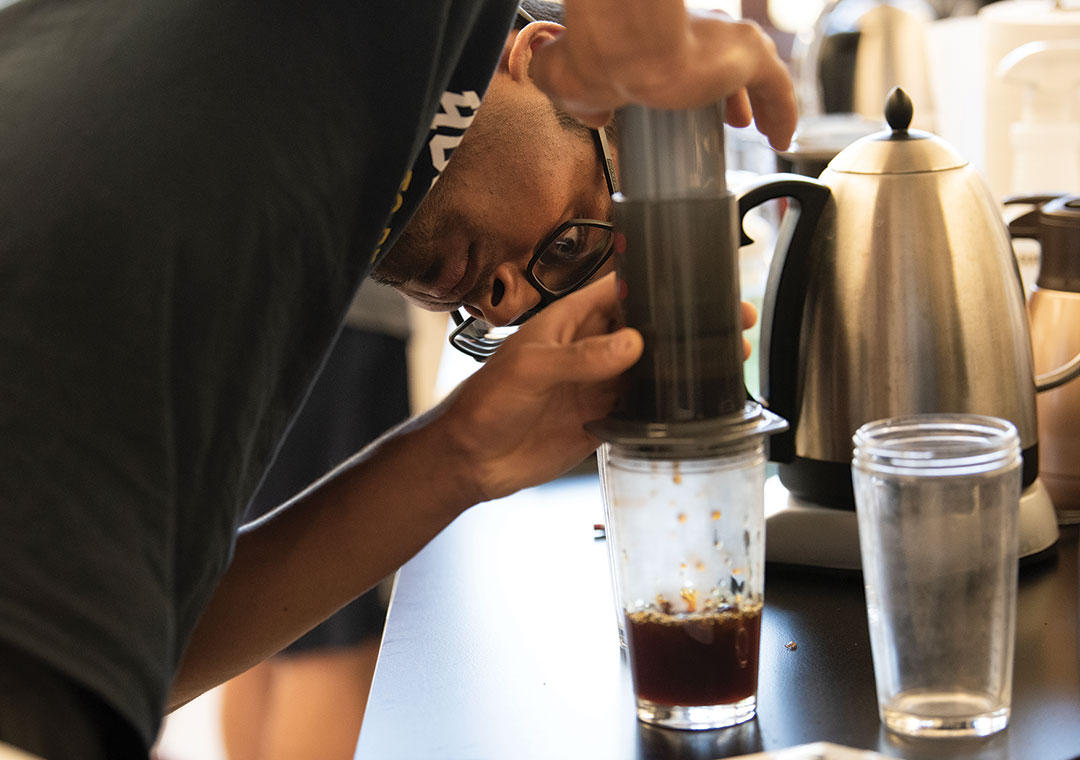
In “The Design of Coffee” class, students brew coffee for specific results — and get to taste test what they make. They learn to detect sour, citrus, bitter, floral and sweet elements.
Brewing interest in coffee education and science
The idea of studying coffee as an academic discipline at UC Davis originated in 2013 almost by accident. Bill Ristenpart and Tonya Kuhl, two professors in the UC Davis Department of Chemical Engineering, were trying to come up with an innovative solution to create new lab assignments for their department, which was experiencing tremendous growth.
“We started thinking, ‘Maybe we should create a lab that students could do in the dorms with an automatic drip coffee maker,’” Kuhl said, “Then Bill took that idea further and said, ‘We could do a lot of different experiments around coffee!’ and grew it into a quarter-long version about experiments all around coffee.”
They also thought framing scientific concepts around a cup of Joe would make chemical engineering more approachable. They were right. The class was instantly a hit among students, growing quickly by word of mouth. Engineering and non-engineering majors alike at both undergraduate and graduate levels signed up. Currently, “The Design of Coffee” (ECH1) has 16 to 19 lab sections each quarter and enrolls more than 1,500 students each year.
“[UC Davis has] a whole building on campus that is aimed at doing for coffee what [it] has already done for beer and wine. It’s taking coffee research and education to the next level.” — Bill Ristenpart
In the class, students learn key engineering principles, including material balances, chemical kinetics, mass transfer, conservation of energy, fluid mechanics and colloidal phenomena, all through the commodity of coffee. Students also go through sensory training, learning how to detect sour, citrus, bitter, floral and sweet elements from types of brews using different techniques or beans from around the world.
Students said they most enjoy getting to engage in small-group, hands-on, experiential learning. For example, for their final, students had to work in pairs or teams of three to brew the best-tasting cup of coffee while using the least amount of energy throughout the entire process including roasting, grinding, heating water and brewing.
Coffee creates a buzz at UC Davis
The success of the coffee class soon created a buzz among other faculty and campus leadership as well. In 2014, UC Davis launched The Coffee Initiative as a means to bring together UC Davis researchers who were already involved in or were interested in integrating coffee studies into their research. More than 50 faculty members from departments ranging from agriculture and food safety to nutrition, economics and law got involved.
“What started as a teaching exercise quickly turned into a research endeavor,” Ristenpart said.
From these multi-disciplinary collaborations, UC Davis has produced some cutting-edge and, sometimes, delicious research. For example, UC Davis released the first public genome sequence for Coffea arabica, the species responsible for more than 70% of global coffee production. Additionally, Ristenpart has been working with colleagues in the College of Agricultural and Environmental Sciences to develop a jelly using the fruit surrounding coffee beans.
“It’s delicious and has a nice caffeine kick to it,” Ristenpart said.
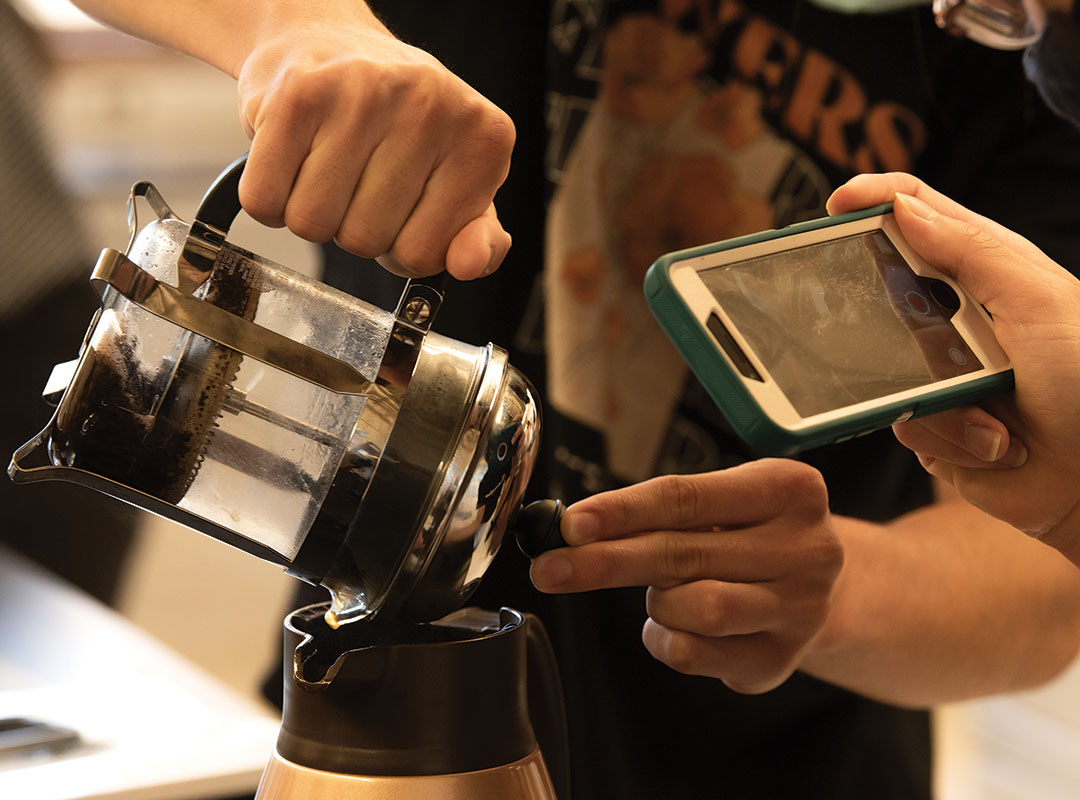
Students document each step of their brewing process in “The Design of Coffee” class.
Untapped potential
As Ristenpart, Kuhl and others at UC Davis delved more into coffee-related research, they discovered a huge unmet need to infuse academic insight into the coffee industry.
“It’s almost an untouched crop,” said Irwin R. Donis-González, professor in the Department of Biological and Agricultural Engineering and director of Latin American relations with the Coffee Center. “There’s been very little research in coffee, believe it or not, even though it’s one of the most exchanged commodities in the world.”
Ristenpart, Kuhl and others within the College of Engineering began reaching out to people in the coffee industry to notify them of UC Davis’ efforts to pursue coffee as a research enterprise and seek out partnerships. The results were overwhelming. The idea of creating a multidisciplinary university research center to address the challenges and needs of the coffee industry began to percolate.
Partnering with industry and alumni
In 2015, Chevron and UC Davis chemical engineering alum John ’84 and Linda Wasson made gifts to renovate a space in Everson Hall to create the Undergraduate Coffee Lab, complete with a full array of benchtop roasting, brewing and analytical equipment for conducting research and teaching science through roasting and brewing coffee.
Then Peet’s Coffee made a donation to create a pilot roastery devoted to studying post-harvest coffee research and engineering. La Marzocco made a gift to build the first post-harvest coffee research facility in the United States. Toddy made a gift to create an innovation lab to focus on cold brew research. Folgers Coffee made a gift to create the first university infrastructure in the nation to address unresolved questions around coffee’s flavor profile. Altogether, more than two dozen industry partners and alumni have supported the future Coffee Center.
Elevating coffee research
With each gift, donors and industry partners cited their confidence in UC Davis’ expertise in agriculture-related research, as well as a desire to be a part of building an academic research center focused on coffee.
“[UC Davis has] done so much for other craft beverages — wine with the Robert Mondavi Institute for Wine and Food Science, and craft beer,” said Brant Curtis, director of communication and innovation at Wilbur Curtis Co., who made a gift in 2017 to support the Coffee Center. “It made complete sense to us that coffee would and should be next, and we wanted to help that happen.”
Julia Leach, president of Toddy and a member of the Coffee Center advisory board, said she is eager to have scientific data to answer questions or support findings they observe in their work.
“There’s so many questions that nobody really knows [the answers to],” she said. “Being able to quantify [our observations] with real data is something I’m very excited about and [I’m] very excited to be able to share that with the world.”
Creating a coffee workforce
Building an academic pipeline in coffee-related science is another goal of the Coffee Center that excites industry partners. Presently there is nowhere in the U.S. that offers an advanced degree specifically in coffee. A long-term goal for the UC Davis Coffee Center is to create and offer a first-of-its-kind graduate program: a master’s degree in coffee science.
However, even without a formal degree program, “The Design of Coffee” is already leading alumni to jobs in the coffee industry.
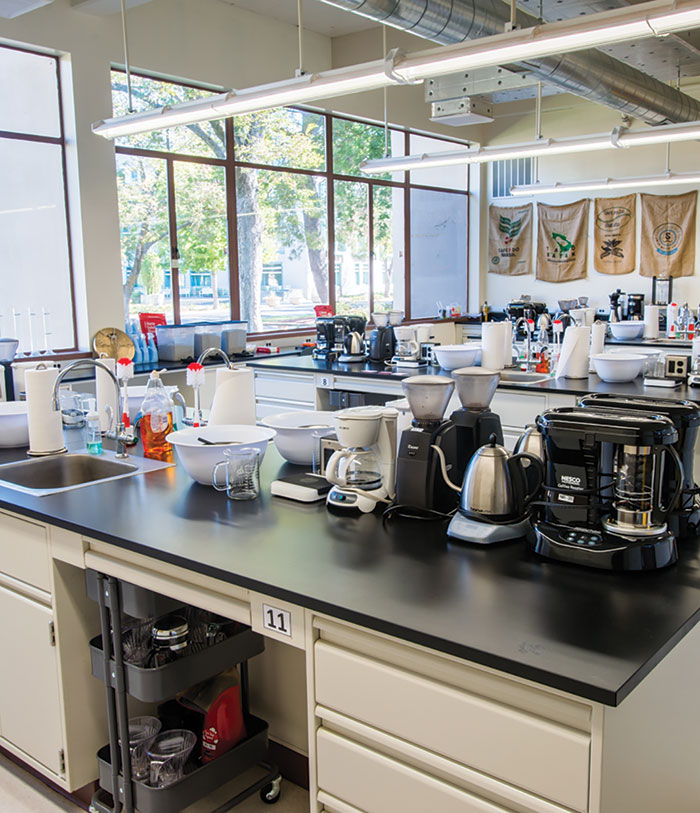
The Undergraduate Coffee Lab in Everson Hall, 2015
UC Davis Coffee Center Timeline
- 2013
- “The Design of Coffee” course created
- 2014
- UC Davis launches The Coffee Initiative
- 2015
- The Undergraduate Coffee Lab renovated
- 2016
- Peet’s Coffee makes first gift to support UC Davis Coffee Center
- 2021
- UC Davis Coffee Center location identified
- Spring 2022
- UC Davis Coffee Center builder selected
- Fall 2022
- UC Davis Coffee Center ceremonial groundbreaking
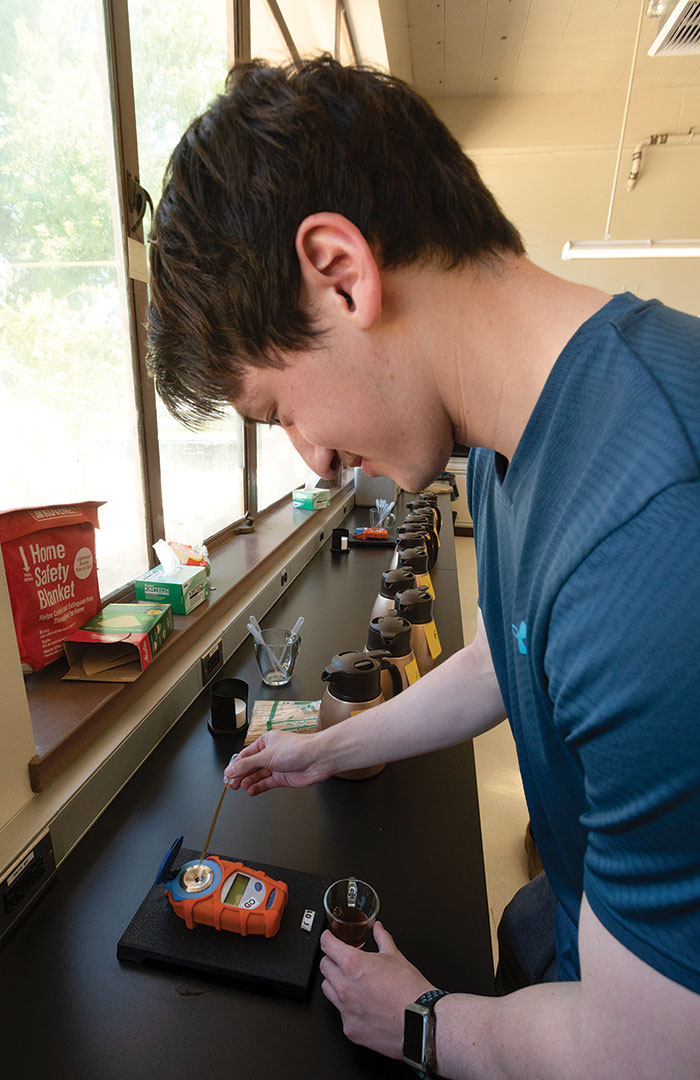
In the coffee lab, Joshua Winerman, a computer science major, uses a digital refractometer to test the concentration of his brew.
Global leader in coffee research
The pursuit of coffee research looks to only be getting stronger at UC Davis. This fall, the university will host a ceremonial construction kickoff of the UC Davis Coffee Center. This will initiate a $6 million renovation project to transform a 7,000 square-foot building located near Putah Creek Lodge into an academic research and teaching facility dedicated to coffee.
The center’s physical infrastructure and laboratories will allow researchers to investigate a host of post-harvest research topics under carefully controlled and measured conditions. The goal is that this facility will bring visitors, students and researchers from across the university and the world together for cutting-edge coffee science that will be explored and translated into practice.
“It’s amazing to think that something that I initially thought of purely as a pedological exercise and just an idea for a class blossomed into the UC Davis Coffee Center,” Ristenpart said. “There is a whole building on campus that is aimed at doing for coffee what UC Davis has already done for beer and wine. It’s taking coffee research and education to the next level.”
A holistic approach to studying coffee
In addition to exploring coffee science from bean to cup, the Coffee Center has been expanding its course offerings to address the growing interest in understanding the social, cultural, economic and psychological aspects of coffee. Driving this interest are the facts that coffee farming and agriculture impacts 120 million people in developing countries throughout the world and is a $225.25 billion industry globally, according to the National Coffee Association.
This fall, the Coffee Center will offer a general undergraduate course called “Just Coffee” that explores the complex set of biological, ecological and social interactions surrounding coffee. Another course called “World in a Cup” will use the theme of coffee to explore how social scientists have thought about macro-social change from the 1500s to present day.
The center also has been pursuing opportunities to engage with the coffee community, from the general public to growers in developing countries. For example, Kuhl hosted a workshop at the 2022 California State Fair to teach the public some of the concepts covered in “The Design of Coffee” class. Additionally, Donis-González works directly with growers around the world, particularly in his native Guatemala, helping them develop solutions for drying, storing and packaging coffee beans.
“The most exciting potential for coffee research,
I think, is to help small-stakes farmers improve their sustainability while increasing their economic benefit,” said Kuhl. “Because we really hope that we can reach out to folks and bridge these gaps and make sure that everyone benefits from improving coffee production.”

